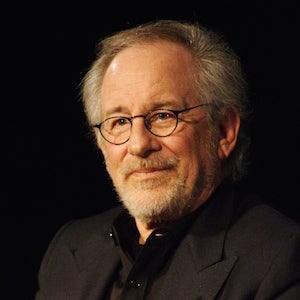The making of “Schindler’s List” was a triumphant milestone in the life of Steven Spielberg, but to the 47-year-old director the film is but a prelude to “the most meaningful thing I have ever one.”
The “thing” is a global, high-tech project, formally known as the Survivors of the Shoah Visual Foundation, to record the testimonies of as many as 150,000 Holocaust survivors.
During the shooting of “Schindler’s List,” and since its release, countless survivors “have come up to me and said, `Let me tell you my story,'” he said in an interview in the office of his production company, Amblin Entertainment.
“But what they were really saying is, let me tell a camera, let me tell history my story.”
With most survivors now in their 70s and 80s, time is running out, but “as long as there is somebody who want to tell their story, there will be a camera and microphone for them to tell it,” Spielberg said.
On the back lot of Universal Studios stand four large trailers, crammed with state-of-the-art computers and video processors, operated by 75 professionals supported by 1,200 worldwide volunteers.
One trailer holds 332 cataloging stations, where computer programmers and three full-time historians break down each interview into its precise components.
Through a menu of thousands of key words, future scholars will be able to learn, for instance, how many survivors were chemists, came from a certain town, attended Hebrew school, played a musical instrument or mentioned latrine facilities at concentration camps.
In another section, experts work at the cutting edge of digital video technology, so that in a couple of years they will be able to transmit by on- line computers thousands of interviews to educational institutions, museums or individuals.
Plans also call for the production of documentaries, books and CD-ROM applications for schools, in which students will virtually “walk through” a concentration camp barrack, see different faces and click on a face to hear that person’s story.
Interviews with survivors are supplemented by documents, photo albums, maps and optional appearances by the survivor’s family. None of the testimony is edited and every survivor receives a free tape of his or her interview.
Spielberg objects to warnings by some Holocaust scholars that the interviewers are not professionals in their craft and lack a detailed knowledge of the Holocaust.
“It doesn’t take a Ph.D. in psychology to be a good interviewer and get the most benefit from a survivors story,” Spielberg said. “I don’t believe it’s science. It’s an art and so we look for humanitarians who are highly intelligent, very compassionate and empathic.”
Interviewers, who attend a 20-hour training program and are paid $50 per interview, include rabbis, lawyers, psychiatrists, teachers and survivors.
Spielberg is at some pains not no step on the toes of other institutions, which have quietly collected some 7,000 to 10,000 oral histories of survivors over the years.
Five of the leading institutions have been designated as repositories for the completed visual history material. They are the Fortunoff Video Archive for Holocaust Testimonies at Yale University, Museum of Jewish Heritage in New York, Simon Wiesenthal Center in Los Angeles, U.S. Holocaust Memorial Museum in Washington, D.C. and Yad Vashem in Jerusalem.
The visual history project began in Los Angeles in June 1994. Spielberg’s goal is to collect and process 50,000 testimonies by the end of 1997, and have an on-line, multimedia database of close to 150,000 interviews by 2004.
The current number of survivors in the world is estimated at between 250,000 and 350,000, though Ari Zev, the project’s research director, now believes that the number may be as high as 400,000.
The visual history project includes in the term “Holocaust survivor” all Jews who lived under Nazi rule in Germany and the rest of Europe between 1935 to 1945. Under this broad definition, Jews who left Germany as refugees before the outbreak of war are also classified as survivors.
In addition, Spielberg said he wanted to interview Righteous Gentiles who hid or rescued Jews, and Allied soldiers who took part in the liberation of the camps, in order to “see the Holocaust from every single perspective,” he said.
With an annual budget of $20 million, the project requires heavy financing.
Spielberg himself contributed $3 million in seed money. Thanks to such contributors as MCA/Universal, NBC, the (Lew) Wasserman Foundation and Time/ Warner, $23 million has been raised. Checks have also come from less affluent donors, such as the $33 sent in by an elementary school class.
Anne Marie Stein, public relations director for the foundation, said project leaders want to hear from as many survivors as possible. In the United States and Canada, the toll-free number is (800) 661-2092. From other countries, phone (818) 777-4673. The mailing address is P.O. Box 3168, Los Angeles, Calif. 90078-3168
JTA has documented Jewish history in real-time for over a century. Keep our journalism strong by joining us in supporting independent, award-winning reporting.
The Archive of the Jewish Telegraphic Agency includes articles published from 1923 to 2008. Archive stories reflect the journalistic standards and practices of the time they were published.




